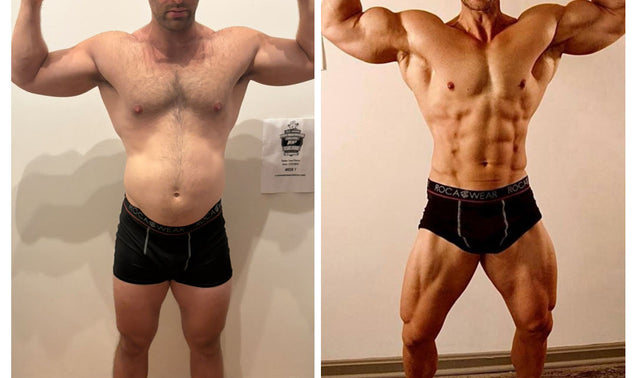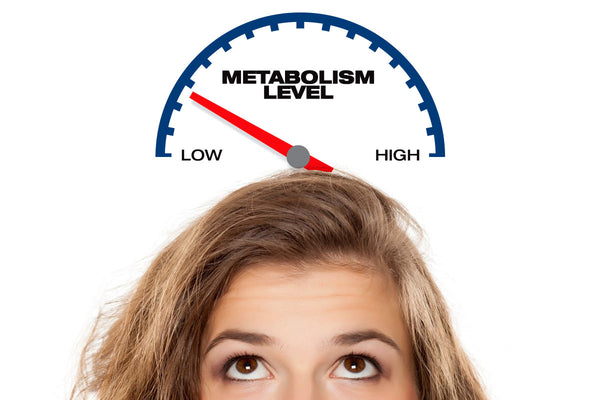If you’ve ever undertaken a fat loss diet, you likely experienced the following:
- You lose weight pretty steadily the first couple of weeks, and
- After those first couples of weeks, the rate of weight loss slows and eventually stops
Why does this happen?
If at first, the fat loss diet was working, why does it all of a sudden “stop working?”
Well, it all has to do with a little something called metabolic adaptation.[1]
Basically, metabolic adaptation (adaptive thermogenesis) is really a fancy way of saying that our body’s metabolism adjusts to the fact that we’re losing weight and down-regulates the amount of energy we burn each day.
Let’s delve into the topic of metabolic adaptation further and see the various factors that cause it to happen.
Why Do We Burn Less Calories As We Lose Weight?
Let’s start by reviewing the basics.
In order to lose weight, you have to eat fewer calories than you burn each day. This is also referred to as a negative energy balance.
When you consume less energy than your body requires, your body pulls energy from its energy stores (i.e. body fat) to make up for the energy deficit. If this negative energy balance persists for several weeks, you will lose weight.
Now, as your body’s fat stores start to shrink, you weigh less, which means your body has to do less work to move your body through space.
And here, we arrive at the first reason for why an individual will start to burn fewer calories as they get more shredded -- they don’t weigh as much and thus less total work is performed, which means less total calories are burned.
This is the same reason why a person weighing 250 pounds will burn more calories in an hour of walking than a person weighing 170 pounds, provided they’re moving at the same speed. There’s less weight to move, and therefore less energy will be burnt.
But, a reduction in total body mass isn’t the only reason an individual will start to burn fewer calories as they get more shredded.
You see, our bodies are incredibly sophisticated, and they will enact a variety of countermeasures when faced with a prolonged energy deficit.
To understand these various countermeasures, let’s briefly recap how your body burns calories each day -- also known as total daily energy expenditure (TDEE).
TDEE is made up of four components[1,2]:
- Resting metabolic rate (RMR) -- the number of calories your body burns at rest
- Thermic effect of activity (TEA) -- the number of calories burned during structured physical activity (i.e. exercise)
- Thermic effect of food (TEF) -- the number of calories burned digesting and absorbing food. This is also known as diet-induced thermogenesis.
- Non-exercise activity thermogenesis (NEAT) -- the number of calories burned from non-exercise activities such as walking from one room to another, throwing out the trash, walking to the bathroom, tapping your toes, snapping your fingers, etc.
Now, the human body doesn’t like to change. It likes the way it is and will fight like hell to remain that way. So, as you can imagine, it takes quite a lot to get it to change (hence why building muscle and/or losing body fat can be so hard).
Well, when you diet, the more fat you lose, the more your body perceives that it is in a state of starvation, and the more countermeasures (and the more aggressively) your body starts to enact, particularly in the areas of non-exercise activity thermogenesis and diet-induced thermogenesis.
For starters, the longer you are in a calorie deficit, the less you start moving around – by reducing fidgeting, tapping your toes less, moving less frequently from room to room, etc. Nevermind the fact that the longer you diet, the more intense your body’s hunger signals start to get!
The body also responds to this prolonged energy deprivation by lowering our resting metabolic rate by downregulating the amount of energy used in a wide array of bodily functions, including everything from the immune system to food digestion.
And remember, this is all in addition to the fact that you’re burning fewer calories during exercise on account of the fact that you now weigh less than you did at the beginning of your fat loss journey.
Taken together, this explains why fat loss plateaus or “sticking points” can happen after a few weeks of dieting.
While you may think you are still in a calorie deficit, the reality is that your body isn’t burning as many calories as it was at the beginning of dieting. Therefore, if you want to keep losing weight, you’ll either need to further reduce your calorie intake or significantly increase the amount of exercise you’re doing -- or preferably, a combination of both.
Takeaway
Losing weight is a complex process that involves constant monitoring, reassessment, and adjustments in order to achieve success. As we lose weight, our body responds in a number of ways that ultimately leads to us burning fewer calories as we get leaner.
Despite these metabolic adaptations, we are able to continue losing weight through alterations to our calorie intake and energy expenditure.
And to help deal with the intense hunger pangs and low energy that accompanies prolonged periods of dieting, 1UP has developed a powerful arsenal of weight loss aids and appetite suppressants to help you along the way.
Two of our personal favorites are Make Her Lean MAX and Pro Ripped MAX which contains a potent mix of energy boosters and thermogenic nutrients that stimulate the metabolism to help you stay on point with your diet and maintain high levels of performance during your workouts, ultimately helping you burn more calories and lose weight faster.
References
- Trexler ET, Smith-Ryan AE, Norton LE. Metabolic adaptation to weight loss: implications for the athlete. J Int Soc Sports Nutr. 2014;11(1):7. Published 2014 Feb 27. doi:10.1186/1550-2783-11-7
- Sevits KJ, Melanson EL, Swibas T, et al. Total daily energy expenditure is increased following a single bout of sprint interval training. Physiol Rep. 2013;1(5):e00131. doi:10.1002/phy2.131
- Melanson EL. The effect of exercise on non-exercise physical activity and sedentary behavior in adults. Obes Rev. 2017;18 Suppl 1(Suppl 1):40–49. doi:10.1111/obr.12507






